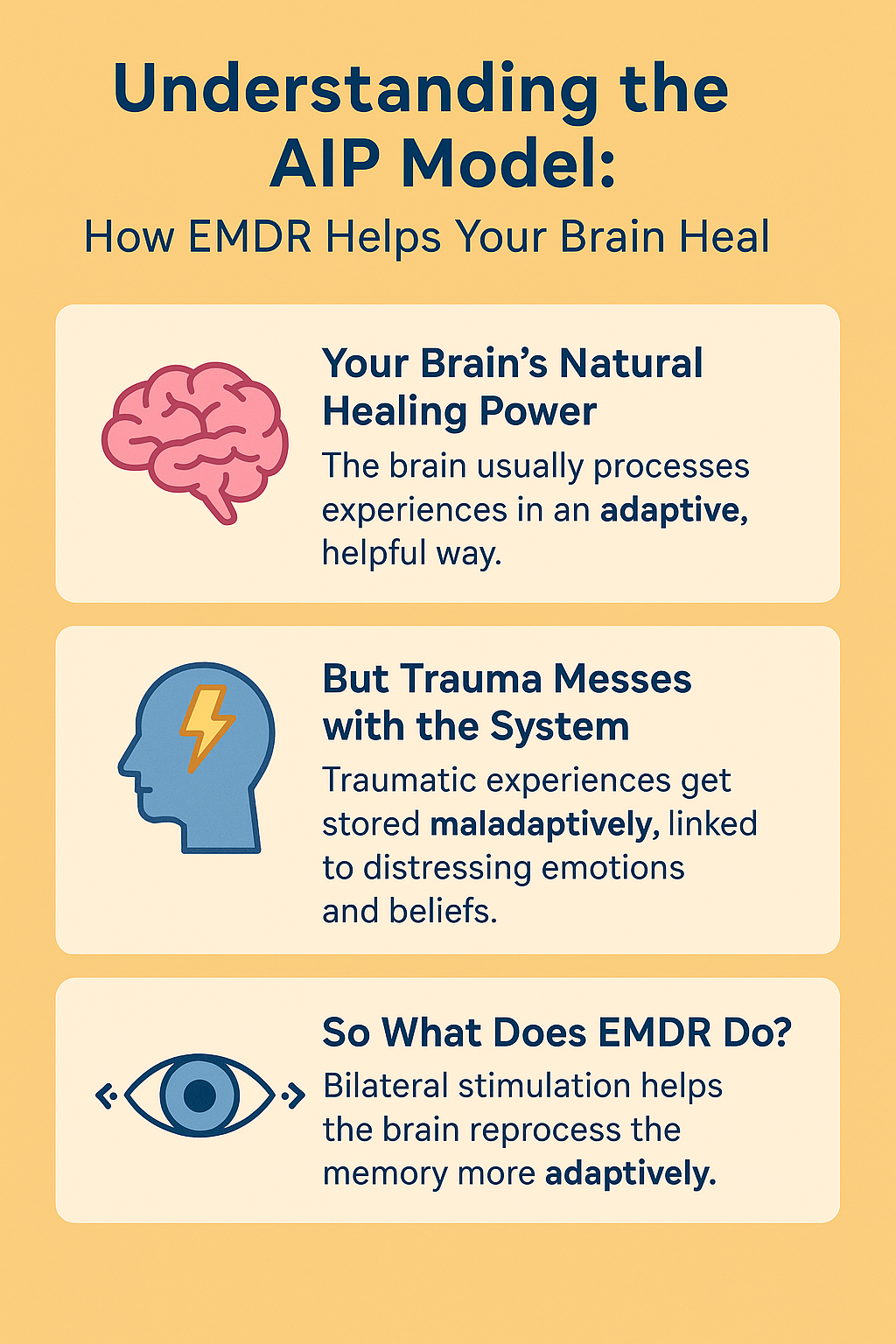The Essence of the AIP Model in EMDR
Understanding the AIP Model: How EMDR Helps Your Brain Heal
Ever wonder how EMDR actually works? The secret sauce behind EMDR therapy is something called the Adaptive Information Processing (AIP) model—a fancy name for something your brain is actually built to do: heal.
Let’s break it down in plain language, with a little neuroscience sprinkled in.
Your Brain’s Natural Healing Power
The AIP model says that your brain has a built-in system to process and store experiences in a healthy, helpful way. When everything’s working smoothly, even hard moments can be filed away with a sense of “that happened, and I got through it.”
This is called adaptive memory storage. It’s like your brain’s version of a well-organized file cabinet. You can revisit the memory if needed, but it doesn’t jump out at you or knock you sideways with emotion.
But Trauma Messes with the System
Sometimes, when something overwhelming, traumatic, or deeply stressful happens, the brain’s processing system gets stuck. The memory doesn’t get filed away properly—instead, it’s stored in what we call a maladaptive way. That means:
•The memory might stay raw and vivid.
•It gets linked with intense emotions, body sensations, and negative beliefs (like “I’m not enough”)
•It can easily get triggered by present-day experiences—even if you don’t consciously realize it.
Maladaptive memories are like old files left open on your desktop, popping up again and again when you least expect it.
So What Does EMDR Do?
EMDR stands for Eye Movement Desensitization and Reprocessing. It’s not just about talking through what happened—it’s about changing how the memory is stored in your brain.
Using bilateral stimulation (like guided eye movements, tapping, or sounds), EMDR activates the brain’s natural processing system. That helps:
•Unstick the memory from where it got frozen in time.
•Reconnect it with more adaptive, helpful information.
•Reduce the emotional intensity tied to the memory.
Think of it as moving a memory from the “Emergency! Danger!” folder into the “It happened, and I’m okay now” folder.
EMDR Through the Lens of AIP: The Basics
Here’s how it all fits together:
1 - Unprocessed memories = current distress. Many of the symptoms people struggle with—anxiety, nightmares, flashbacks, shame—can be traced back to trauma or overwhelming experiences that didn’t get fully processed.
2 - The brain wants to heal. Just like a physical wound scabs over, your mind wants to heal too. Trauma can block that healing, but EMDR clears the path.
3 - Bilateral stimulation gets things moving. By stimulating both sides of the brain while focusing on a memory, EMDR helps the brain reprocess that experience more adaptively.
4 - You still remember the event—but it doesn’t hurt the same way. After EMDR, the memory is no longer charged with the same intensity. You remember what happened, but it’s more like a story from the past, not a movie you’re reliving on loop.
In a nutshell:
EMDR doesn’t erase memories—it helps your brain finish what it didn’t get a chance to do when the trauma happened: make sense of it, integrate it, and move forward.
Understanding the AIP model: How EMDR helps your brain heal



